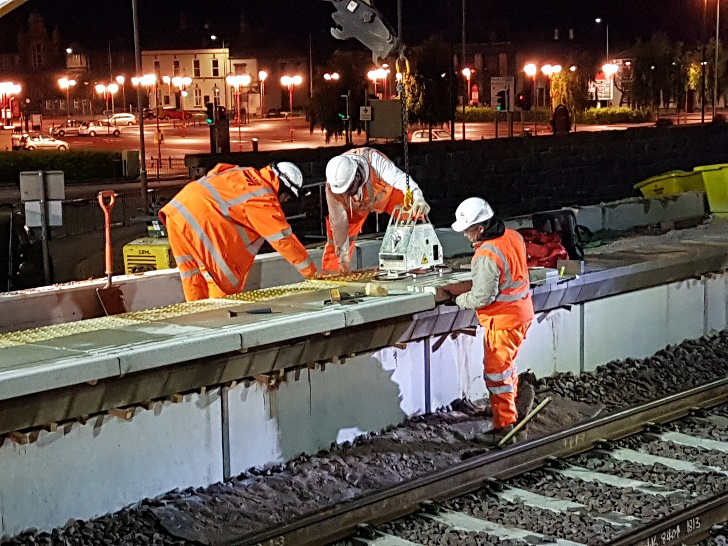As Southern Rail industrial action brought Greater London to a shuddering halt recently, HBPW was playing its own part in keeping northern commuters firmly on the move.
Network Rail is delivering faster direct links between cities and towns across the north of England and, as part of its wider plan, is electrifying the route between Manchester and Preston via Bolton.
The Lancashire initiative will pave the way for faster more spacious trains later this year whilst creating more passenger capacity.
However, before the entire plan can be brought to its conclusion, tracks at Chorley railway station have had to be lowered so that new overhead line equipment, required to power electric trains, could be made to fit under nearby bridges.
HBPW helped keep passenger inconvenience to a minimum during the development phase.
Design engineer, James Cable, said: “Both subway roofs at the station were replaced last August to support the increase in weight that faster electric trains will bring to the route this December.

Work Starts on the Piled Retaining Wall South of Chorley Station
“Not only did a 450m retaining wall have to be installed to support the embankment next to the railway, but the track also had to be realigned to facilitate the safe passing of faster trains in the future. This meant both platforms at the station had to be rebuilt with the resulting requirement for temporary works and platforms.
“Platform One has been reconstructed to support new track alignment work so that longer, more spacious trains, can use Chorley station in the future. Consequently, a temporary platform, accessible from the customer car park, and to the south of the existing structure, had to be created for use by passengers travelling towards Preston.

Installation of the Temporary Platform at Chorley Station
“It was 138m long with pedestrian access at the station end, and was designed using proprietary falsework components, scaffold tubes and boards, as well as non-slip plywood boarding. The entire platform was founded on a reinforced concrete slab.”
Platform Two, meanwhile, was rebuilt in sections which meant it could remain open throughout the reconstruction phase.
“We provided a temporary platform decking system across the surface of the existing platform, and pedestrian access was maintained throughout whilst work continued, a good example of how quality engineering planning can help achieve major goals whilst keeping disruption to a minimum,” added James.
Around 5,000 – 6,000 man hours were involved in the slewing and raising of tracks adjacent to each of the two platforms, and there was a 50-hour station blockade between Friday and Monday so that the work could take place. An army of track workers, labourers, contractors and Network Rail personnel were involved.

New Block Paving on Platform 2
Partner Paul Monaghan, said: “By any standard this was a major exercise because the slewing of track some 300-400mm with an additional track lift of approximately 150mm-190mm meant there were major passenger safety considerations.
“The temporary structure on Platform Two had to be put in place to bridge these height and width changes so that passengers could seamlessly get onto trains whilst work continued around them. It was a great team effort by all concerned and produced a superb result.”
Network Rail says electrification of lines will provide for faster, more spacious trains and greater reliability. Their lighter structure will also mean less track damage.
Equally the 2017 transformation will mean lower carbon emissions than diesel locomotives, hence better air quality, and quieter trains. Electric trains are cheaper to operate, have lower energy costs and require less maintenance.

Chorley Stations Temporary Platform in Use

